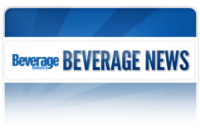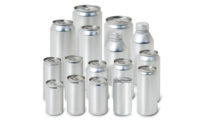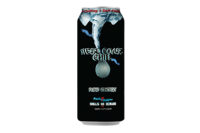As pottery-makers and glass blowers have known for thousands of years, the shape of a container is a powerful art form, says George Caplea, executive vice president of global business development for Constar Inc., Trevose, Pa. With the retail shelf as its canvas, a beverage package’s shape as well as its material type helps to differentiate the brand on the shelf.
According to a January 2012 Packaged Facts report titled “Food Flavors and Ingredients Outlook 2012,” 476 new non-alcohol beverages launched in plastic packaging in 2011, which was more launches than any other material type. However, use of plastic packaging for non-alcohol beverages decreased 25 percent from 2010 to 2011, the report noted.
Releases in cardboard and glass materials also decreased 56 percent and 64 percent to 121 and 96 non-alcohol beverage launches, respectively. On the other hand, paperboard packaging material increased 18 percent from 2010 to 2011, reaching 154 non-alcohol beverage launches in 2011, according to the Rockville, Md.-based market research firm’s report. Use of aluminum increased 61 percent to 58 non-alcohol beverage launches, it reported.
Breaking into aluminum
In the overall U.S. beverage industry, cans account for 41 percent of the volume share in the market, says Jim Peterson, vice president of marketing and corporate affairs for Ball Corp., Broomfield, Colo. In the beer category, cans make up approximately 53 percent of the market, experts say. This growth is driven partly by a trend in craft brewing toward packaging in cans, Peterson says.
“The evolution of craft beer into cans continues at the staggering growth rate of roughly 150 percent in 2011 as more craft brewers have come to realize the economic and sustainability advantages of choosing cans,” Peterson says.
Although beer and carbonated soft drinks (CSDs) are popularly packaged in cans, other categories are starting to break into the packaging format. Some companies are packaging wine in cans to capitalize on the package’s portability, Peterson says. Packaging water in cans has grown 30 percent since 2008, surpassing the 250 million unit mark in 2011, he adds.
Aluminum bottles also are in demand with consumers and beverage-makers. Peterson notes the popularity of the company’s Alumi-Tek bottles in 12- and 16-ounce sizes because they reinforce key brand equities and extend bottled beverage occasions into venues where other packaging materials are not allowed and extruded aluminum is unaffordable.
Flexibility for convenience
When it comes to convenience packaging, resealable flexible pouches are the newest trend, according to The Freedonia Group, Cleveland, Ohio.
Many shoppers associate flexible pouches with convenience and ease-of-use, says Blair Vance, product manager for Bosch Packaging Technology’s Liquid Food division, Waiblingen, Germany.
“Consumers are looking for products that are easy to take on-the-go and that they can drink directly from the package,” she says. As a result, Bosch Packaging Technology introduced the SurePouch in March. The SurePouch is a line of flexible stand-up pouches featuring innovative resealable spouts that are easy to open without the need for pull tabs or difficult-to-remove inner seals, Vance explains.
Desire for transparency
The most popular material for non-alcohol beverages, according to the Packaged Facts report, remains plastic bottles. The packaging benefits from being resealable, shatter-resistant, recyclable and customizable, says Constar’s Caplea.
To optimize production and product quality, Constar is focused on expanding its hot-fill polyethlylene terephthalate (PET) bottles and jars, he says. Its other area of focus is oxygen barriers. The company offers a range of functional design options for hot-fill packages, and features its DiamondClear scavenger material to prevent oxygen from entering the bottle. DiamondClear delivers up to two years of shelf life for oxygen-sensitive products such as vitamin-enhanced drinks, juices and teas in crystal clear PET bottles, Caplea says.
When it comes to custom packaging, plastic offers two main advantages over glass: speed-to-market and inexpensive mold costs, says Michael Zuckerman, principal at King of Prussia, Pa.-based Zuckerman Honickman. However, some companies in the beverage industry pursue glass because it is perceived as ultra high-end or nostalgic, he says. For example, Boylan Bottling Co., Moonachie, N.J., offers its super-premium sodas in glass bottles.
“Glass is and always will be an essential part of what Boylan is about,” said Martin Kelly, president and chief executive officer of Boylan Bottling. “Our authentic thick glass bottle is not only critical to the taste preservation of our bold flavored sodas, but also to our Boylan brand image.”
Owens-Illinois Inc. (O-I), which supplies the glass for Boylan, notes that glass is the most neutral beverage packaging material in the marketplace when it comes to taste. It’s flavorless and odorless, and provides a premium look and feel, says Sara Alcroft, marketing communications director for the Perrysburg, Ohio-based company.
Additionally, premium water, ready-to-drink iced teas and energy drinks are being packaged in glass more often in order to differentiate themselves from other products in the market, says Andres Cumming, vice president of marketing and new product development for Vitro Packaging.
Space for branding
According to a study by The Freedonia Group titled “World Aseptic Packaging,” demand for aseptic packaging in North America will grow 8.3 percent annually, reaching $6.8 billion in 2015. Globally, beverages will continue to represent more than half of the aseptic packaging market, it adds. Demand for aseptic packaging in beverage applications will benefit from output growth coupled with expanding applications resulting from the cost and sustainability benefits of aseptic packaging, especially the ability for perishable beverages to be transported by unrefrigerated trucks and stored at ambient temperatures, the study says.
Tetra Pak Inc., Vernon Hills, Ill., recently expanded its portfolio with the introduction of two new 200-ml. and 250-ml. portion packs that were based on its Tetra Brik Aseptic Edge design. The packages enable on-the-go consumption in single-serve offerings. Featuring large sloping tops and contoured side panels, the Tetra Brik Aseptic Edge portion packs deliver additional branding opportunities for customers and enhanced handling for consumers, it says. Later this year, it will introduce Tetra Rex Pearl, which features a new droplet package design, as well as the Tetra Gemina Aseptic range in leaf, crystal and square shapes for strong visual appeal, the company says.
“Tetra Pak cartons offer a fully printable surface, which allows manufacturers a lot of flexibility in communicating their brand, product benefits, health and nutrition profile to consumers,” says Suley Muratoglu, vice president of marketing and product management for Tetra Pak.
One beverage category that has virtually been built in aseptic carton packages is coconut water, Muratoglu says. The category is growing at a rate of 300 percent for the fourth year in a row and often sells at premium prices, he says. Another beverage category that is experiencing growth in aseptic packages is nectars — particularly varieties of exotic tropical fruit flavors. “Aseptic cartons and the protection they bring to sensitive products are again well positioned to support the growth in this segment,” he says.
Although each packaging material has its own advantages depending on the beverage application, they all share a commitment to sustainability, integrity and customization.
Lean and green
There has been an increased demand for sustainable consumer packaging in the last five to 10 years, according to Megan Daum, director of sustainability at the Can Manufacturers Institute (CMI), Washington, D.C. The real push has come from retailers and manufacturers, although consumers have registered a desire for more responsible products and packaging, she says.
Cans are infinitely recyclable and have the ability to move from bins to shelves in as little as 60 days, experts say. The current U.S. recycling rate for aluminum cans is approximately 58 percent, they add.
Using recycled material in new aluminum beverage cans requires 95 percent less energy and emits 95 percent less greenhouse gas emissions than manufacturing cans from virgin materials, Ball’s Peterson says. Like other material types, aluminum cans can be lightweighted to reduce the weight of shipments, decrease fuel use and reduce costs, he says.
Today, aluminum beverage cans are 28 percent lighter than they were 20 years ago, says Neill Mitchell, vice president of marketing and business development at Crown Holdings Inc.’s Philadelphia-based North American beverage packaging division. Because cans are shatter-proof, less product is lost in the packaging and distribution process, he adds. Most importantly, they are able to protect beverages from light and oxygen damage, which is able to extend a product’s shelf life and maintain taste, he says.
In the plastic segment, many beverage-makers have worked toward lightweighting bottles and increasing the proportion of content made from recycled materials.
According to Zuckerman, the most credible form of sustainable plastic is one sourced from 100 percent recycled PET. The company has been working toward packaging made with 100 percent recycled PET for years and somewhat recently hit its target, he says. In addition, it fulfills the industry’s demand for lightweighted plastic and glass bottles.
“The lightweighting programs are not just in the body of the bottles and the shapes of the bottles, they’re also in the neck finishes — the areas that the consumers won’t necessarily pick up on,” Zuckerman says.
Whether packaging in a plastic or glass bottle, many factors should be considered when launching a brand in a lightweighted package, he says. Beverage-makers need to consider the top load, whether the bottles are stackable in a warehouse, if they are heavy enough to run properly on the production line without denting of paneling and whether the products are hot- or cold-filled, he explains. Zuckerman notes specifically that it’s more difficult to transition to a lightweight bottle for a hot-fill beverage.
In comparison to traditional rigid plastic bottles, flexible packages are lighter in weight and use less film material, which means they require less energy to create, transport and store, Bosch Packaging Technology’s Vance says. Also, they can be collapsed after use, taking up less space in refuse bins and landfills compared to rigid alternatives, she says.
Globally, categories such as plain and flavored waters, probiotic and liquid yogurt drinks, and alcohol-based mixed drinks are moving into flexible packaging, Vance says. The company’s research and market feedback also indicates strong interest and growth potential for flexible packaging in the juice and wine categories.
Glass is 100 percent recyclable and often is lightweighted — especially in the wine industry, O-I’s Alcroft says. In 2010, more than half of the U.S. wineries moved to lighter weight bottles, she explains. O-I’s Lean+Green wine bottle product line is as much as 27 percent lighter than conventional wine bottles, making the product more efficient to manufacture and transport and enables brands to lower their carbon footprint, she says.
Tetra Pak cartons inherently have a low carbon footprint because they are energy efficient through manufacturing, shipping, distribution, use and end-of-life, Muratoglu says. They are lightweight, compact, recyclable, and, on average, 70 percent of the carton is made from wood fibers that are responsibly sourced from growing forests, he adds.
Outside of the traditional beverage packaging materials, one company is dedicated strictly to sustainability. Ecologic Brands, Oakland, Calif., recently introduced its eco.bottle line of stock-molded fiber bottles in 32-, 50- and 64-ounce bottles. The bottles are comprised of a sturdy molded fiber shell made from recycled cardboard and newspapers, and a thin interior plastic pouch that uses up to 70 percent less plastic than a rigid plastic high-density polyethylene (HDPE) bottle, the company says. The plastic pouch and spout are made from No. 4 low-density polyethylene plastic and are bisphenol A-free.
The exterior shell pops open and can be recycled or composted. The plastic pouch inside is recyclable with plastic grocery bags at retailer drop-off bins. Ecologic bottles offer significant carbon savings because the outer shells nest tightly and can be transported flat, according to the company.
Custom concepts
In addition to the demand for sustainable packaging, beverage-makers depend on packaging to differentiate their products at retail. The customization of primary packaging is one such solution.
“The beverage industry is constantly expanding and changing, and new products and brands continue to flood retail shelves,” O-I’s Alcroft says. “Packaging your product in a distinctive, memorable and eye-catching design is crucial to creating competitive differentiation at retail, and driving consumer intrigue and loyalty.”
Developing a custom bottle isn’t an easy task, however. Alcroft points out that it’s important to ensure that the bottle is crafted with a level and even distribution of glass; ensure the base lays flat for ease of handling and added stability; maintain a smooth surface on the exterior of the bottle for ease of label application; and guarantee the ability to replicate the bottle at a high rate of production, Alcroft explains.
Specializing in customized glass containers for premium beverages, Vitro Packaging, Plano, Texas, offers many unique shapes, colors and pre-labeling options for its customers. In the alcohol category, customers are requesting unique shapes and decorations that differentiate them from the competition, Cumming says.
When it comes to cans, a variety of sizes are helping beverage-makers differentiate and brand their products, such as Red Bull and Monster. The Red Bull slim can is a distinctive, iconic package for the brand, says Robert Budway, president of CMI. Monster, on the other hand, makes use of a larger can, which also is iconic for that brand, he notes. Oftentimes, unique can sizes have to do with branding, Budway explains, but they also can aid with value and calorie-control propositions.
The 12-ounce can makes up approximately 85 percent of all cans sold; however, demand for specialty can sizes has increased approximately 20 percent in the last two years, Ball’s Peterson says. From 5.5-ounce mini cans to slim cans to 32-ounce jumbo cans, beverage-makers are leveraging specialty sizes to draw attention, brand their products and appeal to a variety of consumers.
In the energy drink and beer categories, Crown Holdings has noticed an increase in demand for larger can sizes. In the case of beer, larger can sizes are an ideal option for holding multiple servings, Mitchell says.
Graphics also play an important role in differentiating canned beverages and attracting consumers.
“Graphics are a large part of the traction to the consumer base to cans,” CMI’s Budway says. “We’re able to provide eight-color graphics and eye-popping graphics more recently, which provide a branding and a billboarding opportunity to our customers. You’ll see probably more of that as we get ahead in the soft drink industry and in other innovative non-CSD markets.”
Crown Holdings enables its customers to take advantage of cans’ large printable surface area with its Pictoris high-quality printing that creates sharp images to help products stand out on the shelf, Mitchell says.
“[Pictoris] makes use of proprietary separation techniques and special high-resolution printing plates to allow for improved dot spacing, leading to superior print reproduction of complex images on cans,” he explains. “The technique is particularly suitable, for example, for reproducing fine details such as the fruit depicted on juice products, which now look more life-like and help convey the freshness of the brand.”
The company also offers a variety of finishes that bring depth and sophistication to can designs and add a tactile feel, Mitchell says. For instance, Crown Holdings’ thermochromic ink changes color to inform consumers of the optimal drinking time.
Flexible pouches, such as Bosch Packaging Technology’s SurePouch, appeal to beverage-makers because they offer the packaging real estate for graphics to catch shoppers’ attention at retail. They also can utilize transparent film windows that enable shoppers to view the product.
“New and innovative pack styles often attract younger consumers and help facilitate brand recognition — an important consideration for [consumer product goods] looking to enhance brand image with first-time customers,” Bosch Packaging Technology’s Vance says. “Overall, innovative and functional packages that deliver high consumer satisfaction provide brand owners a platform for new products and line extensions.”
A few years ago, there was a trend toward cylinder-style plastic packaging, such as the design used by The Coca-Cola Co. subsidiary Glaceau’s Smartwater, Zuckerman explains. Now, Zuckerman Honickman notices the popularity of square bottles.
“We’re seeing absolutely anything to differentiate the brand on the shelf, and we’re seeing a lot of all of the above: color, texturing, proprietary packaging, etc.,” he says.
In the wine category, Constar’s DiamondClear oxygen barrier material enables wine to be bottled in PET bottles with traditional wine bottle shapes and colors, Caplea says. Oftentimes, a customized bottle can optimize a product’s impact on the shelf while providing function at the same time. For example, a dark-colored PET bottle might help a product stand out on the shelf while preventing light from entering and contaminating a sensitive liquid, he says.
For beverage-makers looking to use shape as a differentiator, Constar can employ mold inserts to create a custom appearance using a stock mold, Caplea says. It also features panel-less base technology, which it used to manufacture PepsiCo’s SoBe 20-ounce PET bottle that features a lizard tail swirl shape on the bottom half of the bottle that aligns with the lizard tail graphic on the label, he adds. BI








